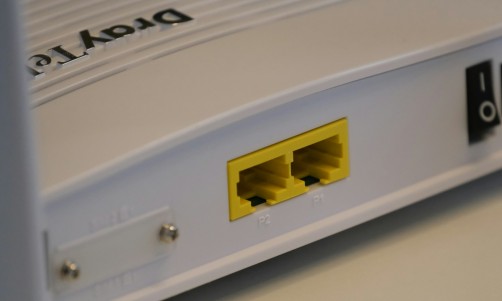Ecommerce businesses do come with some hurdles and complexities. Customer expectations and requirements continue to rise. Along with customer needs, the competition for online revenue is also set on a surge.
In a survey conducted by Retail Drive and BigCommerce, 86% of businesses claim to experience accelerated CAC (customer acquisition costs). Ecommerce companies require a digital marketing policy such that they attract maximum organic traffic. A digital marketing policy also means owning a website that delivers a valuable and engaging customer experience. The poly of digital marketing is lately becoming the go-to solution for several retailers. They have begun to embrace headless eCommerce platforms as an ideal solution for their online business.
There are plenty of reasons why a headless eCommerce platform offers a seamless experience to online businesses. Listed below are some reasons to consider a headless eCommerce platform for your business in 2021 and beyond. Let us take a closer look at some of the many reasons.
Complete Website Control
If your commerce platforms dictate how your website looks, you are not investing in the best solution for your business. Several platforms come with templates and rigid guidelines that control designs, layouts, etc. Therefore, if you require a customized user experience for your audience by making simple changes, you need specialized development and significant changes. Incorporating development can be harsh on the pocket.
With headless platforms, you invest in something that anticipates your requirements and presents unique experiences for your customers. It also is a pocket-friendly choice in the long run.
Decoupled Frontend/Backend Architecture
Decoupled frontend/backend architecture is one of the primary features of headless eCommerce platforms. It drives all the other advantages of eCommerce platforms. Full-stack, traditional headless eCommerce platforms have strictly integrated back and frontends, meaning the business login end and content presentation layer cannot be separated. A strictly integrated back and front end prevents businesses from building their experiences as they prefer, especially when their audience requires changes. Headless eCommerce platforms, on the other hand, creates seamless flexibility in the presentation of eCommerce.
Omnichannel Support
The modern eCommerce solution is about delivering a consistent experience no matter your customers belonging across several touchpoints or channels. You might be selling goods through your websites. Still, you might also be selling across various other marketplaces, including eBay and Amazon, and managing dealer portals, landing pages, or microsites.
For all your business transactions conducted through several channels, you would require one system to offer a seamless experience and minimize data entry, data exporting, data importing from one place to another. An omnichannel eCommerce platform does not mean multiple platforms. The headless eCommerce architecture allows businesses to develop a robust omnichannel strategy that offers the customers flexibility. You get the freedom to run everything from one platform.
Less time invested on IT Support
Going headless with your eCommerce platform makes you more in control of your business. It enables you to spend more time on other value-generating activities rather than your IT infrastructure. Companies start well, but they face integrations and add-ons to match up the grown business when their business scales up. Jobs like integrations and add-ons become a full-time concern. Headless eCommerce platforms, on the other hand, saves you from the regular hassle of IT management.
Additionally, SaaS hosting reduces the dependency on internal IT support. The nature of a headless eCommerce platform means delivering the software as a service, and both can grow and scale as per demand.
Upgrades without re-platforming
Replatforming is considered when one requires new developed features, but the downtime and cost of migration to a new eCommerce platform often give you a pause. Replatforming is very common for companies that grow more than their current platform can handle. But, the good news is, there no longer is a re-platforming requirement to upgrade your current platform.
Headless commerce is different from re-platforming; it is more about data migration. It involves moving the existing data to a decoupled interface by creating a new backend layer. Date transferring is an effective and straightforward solution with minimum downtime.
It is about API
Integration is what headless eCommerce platforms exist for. Given how seamless it is to combine newer applications into a headless interface, it becomes one of the primary reasons to open doors to new possibilities.
Essential use is how you manage the supply chain. There are plenty of touchpoints and vendors scattered across your arrangement. It is challenging to get visibility into the above-mentioned processes, but you can integrate an inventory management system with a headless eCommerce platform and have your tasks done.
Personalized Integration
There are three kinds of headless integrations - hybrid, headless only, and exclusive CMS when speaking of headless eCommerce platforms. Although each of the mentioned options offers several benefits based on the current architecture of your business, headless is not a one size that fits all means.
Therefore, the kind of headless implementation has its benefits and drawbacks. Ideally, the chosen platform must at least support a couple of the installation mentioned above. You might want a strong integration amidst a CMS and a platform at various instances, but there can be a need for marketing for the headless-only implementation. Hence, make sure to plan in advance.
Complex UX Customization
With complete platform flexibility, one gets total control of the customer's UX. Under the traditional framework, a little compromise is unavoidable. You cannot always integrate APIs or your preferred CMS owing to the platform limitations. Therefore, it reduces your ability to provide your customers with what they want. Headless eCommerce platforms undermine this with their flexible approach, assuring extending kinds of experiences that encourage audiences to purchase from you.
Future Proof your Business
Considering a headless eCommerce platform means emphasizing flexibility for your eCommerce infrastructure. Flexibility means your eCommerce platform would be flexible to adapt to eCommerce trends, future developments, and integrations.
Flexibility is a feature to surely adapt to, considering how rapidly the world of eCommerce is growing. Initially, mobile commerce was a luxury which now is standard practice. Headless eCommerce is similar. It is equivalent to preparing brands to accept the evolving eCommerce landscape without separate platforms and complex integrations.
Better Customer Experience
The requirement of your audiences changes with time, and your website must be capable of adapting to newer demands and desires consistently and swiftly. As per a PWC study, nearly 73% of customers state that seamless customer experience is one of the driving factors in their shopping. In addition, 43% of customers said that they could pay more just for increased convenience while shopping.
The website backend already stores details of customers who shop from you or have visited your website. A headless eCommerce platform enables you to utilize this data and deliver highly personalized solutions that enhance your sales and your customers' shopping experience.
To ensure that your customers' data is secured is important you must invest in a robust identity verification solution. It will help your business minimize the risk of money laundering, financial scams, and identity theft and make the onboarding journey smooth.
Cost-effective
When you opt for a headless eCommerce solution, you pick a long-term solution that is also economical. From maintenance of the website to getting the license for hosting, you save significantly on resources. As you get customization ability for your website, allowing you to better react to customer trends, you save ample time by increased agility.
If you are in search of a headless eCommerce solution for your business, you might want to consider BetterCommerce owing to its growing popularity and promising features. It is a thoroughly managed SaaS solution ideal if you are recently stepping up on the web or a company that has outgrown its existing eCommerce platforms. It abides by all the features of a promising headless eCommerce solution, offering you a business that only grows with hassle-free management.
Conclusion
If you face issues with your eCommerce platform and are looking for a more advanced solution that serves you long-term, you can consider switching to a headless eCommerce platform. There are many headless eCommerce platforms available that can help your business grow and flourish without much effort from your end.














